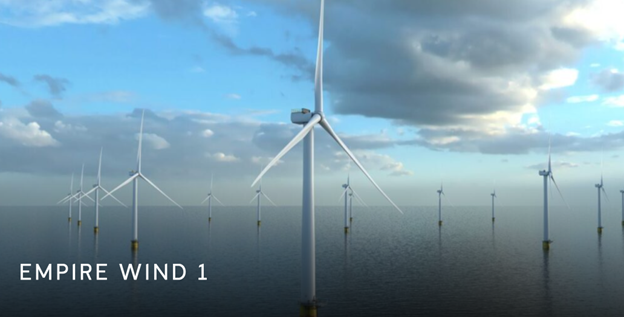IBEW members are hopeful Empire Wind’s offshore project will move ahead now that the Trump administration has reversed a spring stop-work order.
This means 40 IBEW members will soon be onboard ships to wire the first of 54 turbines that will help power the country’s biggest city. The project should start producing power by the end of 2026, said Michael Yee, director of New York Local 3’s Educational and Cultural Trust Fund of the Electrical Industry.
“IBEW and other unions on the Eastern Seaboard have been mobilizing for this for years,” Yee said.
Since 2018, Empire Wind developer Equinor has signed a project labor agreement and began securing permits. Substation construction in Sunset Park and Gowanus, Brooklyn, as well as the pre-assembly site at the South Brooklyn Maine Terminal, had made significant progress. All told, Equinor invested $2.7 billion before the Trump administration came into office.
Then came a January executive order banning new federal leases for on- and offshore wind developments. Because Empire Wind was not a new federal lease, many believed the project would move forward. But an April stop-work order halted Empire Wind in its tracks.
Local 3 members, elected officials, and environmental groups lobbied Trump to reverse course. “We were ready to take a bold step with offshore wind in New York state,” Local 3 Business Manager Christopher Erikson told CBS News. “It’s a long-term opportunity for building trades members to put those turbines out there, so yeah, we’re angry.”
After a month, President Trump lifted the order.
New York Gov. Kathy Hochul thanked Trump for saving “the 1,500 good-paying union jobs that were on the line and helping to get this essential project back on track.”
Now crews including New York Local 3 members are preparing for weeks at sea. Members will live aboard a ship for 3-4 weeks at a time, 15-30 miles off Long Island, Yee said. They are each trained in GWO standards by the Global Wind Organization, a specialty add-on certification.
Unfortunately, Empire Wind may be an exception. Analysts predict the U.S. government’s current anti-wind stance could result in the cancellation of more than $100 billion in offshore development.
In May, Local 3 hosted an IBEW-organized annual wind summit with members, developers, contractors, state agencies, manufacturers, and utilities, primarily from the Northeast and the mid-Atlantic where wind projects are underway.
“We collectively have a vested interest in offshore wind,” said Ed Hill Jr., Third District Business Development international representative.
Mike Gaiser, Third District international representative, said new data centers and manufacturing facilities will strain the already dwindling supply of energy. “Just in my area, three power plants shut down in the last 10 years.”
Today, summer heat waves have led the U.S. Energy Administration to warn higher-than-normal temperatures and cancelled renewable projects will result in increasing energy prices and more blackouts.
“It makes sense for offshore wind to be part of the energy portfolio,” Hill said. Europe has used offshore wind power for 25 years, while many other countries like China and Taiwan are rapidly developing it. “They are building these things as fast as they can.”
Caption: Photo courtesy of Empire Wind.

